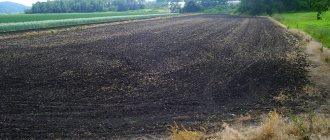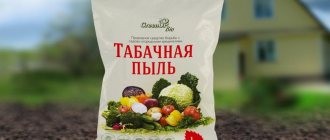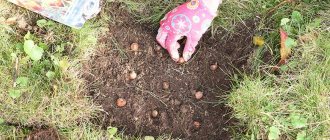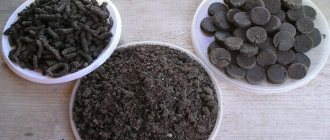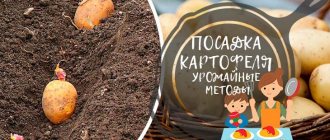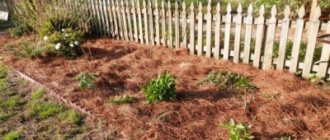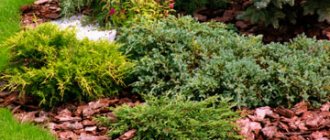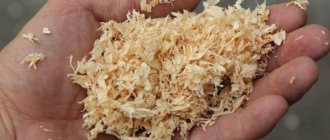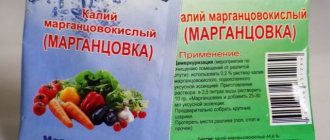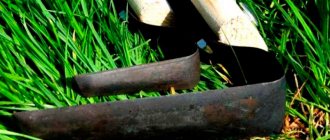Humus and black soil - what's the difference?
Chernozem is one of the types of soil, rightfully considered the most fertile and versatile. In Russia, the Black Earth Zone occupies a huge area. This is natural wealth, which cannot be created artificially. Chernozem is not a fertilizer, but contains all the necessary substances that allow you to grow plants without adding fertilizers.
Humus is an organic fertilizer, it is prepared from animal waste products (manure), or from green manure plants by collecting them and laying them down to rot. This is the difference between the concepts under consideration: humus is a fertilizer, and chernozem is a type of soil.
Another popular type of organic fertilizer is peat, a substance of natural origin. It is obtained from plant residues that have rotted in swamps and along river banks. The addition of rock improves the structure of the soil and saturates it with nutrients.
Useful swampy product - peat
It represents the rotted remains of plants and organisms living in swampy areas and overgrown bodies of water with standing water. Layers of these residues, gradually layering, form compressed biomass, which over long periods of time, being in a highly humid environment and insufficient supply of clean air, turns into natural peat. Based on the degree of humus decomposition, the following types of peat are distinguished:
1. Upland, practically undecomposed residues located on the surface of wetlands and decomposing under the influence of rain and snow. The color is brown or brownish, the structure is light and loose, they have high acidity (pH 3 ÷ 4) and are of little use as fertilizers. Main Use:
- mulching to retain soil moisture, reduce the impact of sudden temperature changes and prevent weed growth;
- for insulating beds when planting garden crops and flowers in the fall;
- for the production of peat tablets and pots;
- as thermal insulation and combustible materials.
2. Low-lying, completely rotten black soils, loose, fertile and inexpensive. The peat layers are dense and highly moist; this is a good organic fertilizer with minerals in its composition. This is an excellent binder for sandy soils, and makes clay soils more loose. Used for:
- mulching the soil;
- making seedling pots;
- preparation of plant mixtures;
- as an organic matter that improves soil properties.
3. Transitional, characterizing an intermediate state between the first two. Decomposition of residues from 25 to 40%. Used to produce compost.
Lowland species are used to fertilize the plots, but they require preliminary weathering (three times shoveling during the summer) and enrichment with potassium fertilizers, superphosphate and manure. Riding and transitional ones are also used in vegetable gardens after preliminary liming for planting vegetables in protected soils or for growing seedlings. But more often they are used to make compost.
Pros and cons of humus
The key to obtaining a harvest is fertile soil, but often places with poor soil composition are allocated for dacha plots. Even rich lands become depleted over time and require fertilization. The most common and beneficial organic substance is humus. Main advantages of the product:
- accessibility - it can be purchased at a fairly low price, and in rural areas it is easy to make it yourself;
- high concentration of nutrients;
- versatility (suitable for application to any type of soil);
- ease of use.
The following circumstances can be considered disadvantages:
- Obtaining humus requires a lot of time.
- Weed seeds and pest larvae are introduced with manure.
- There is a danger of overdose.
Humus soil is not; it must be mixed with soil, observing the required proportions.
Areas of use
The scope of peat application is quite wide. A small portion of peat is still used as fuel in power plants or for heating homes.
The main part of the extracted peat is used in agriculture for the production of:
- fertile soils;
- fertilizers;
- growth stimulants ();
- making peat pots and tablets for seedlings (You can read about growing petunia seedlings in peat tablets);
- as a covering material for the winter.
In livestock farming it is used as bedding.
It is used for wastewater treatment and as an adsorbent for water contamination with oil. In medicine, peat mud therapy is used, as well as for the production of medications. It is also used to produce ethyl alcohol, oxalic acid, furfural and other substances.
In the construction of special-purpose buildings, peat insulation slabs and peat panels are used. Sphagnum peat in powder form is used for storing and transporting vegetables and fruits.
Chernozem: features and advantages
The formation of soil occurs continuously over centuries, and the darker it is, the higher the humus content in it.
Signs of black soil:
- black color;
- lumpy structure;
- high concentration of nutrients;
- resistance to washing and weathering.
Chernozem contains chemical elements necessary for normal plant growth:
- calcium – 70%;
- magnesium – up to 20%;
- nitrogen, iron, phosphorus and others.
Real black soil has no disadvantages, but acquiring it is not an easy task due to:
- the fact that it is easy to run into a counterfeit;
- high price.
Often, instead of high-quality soil, they sell soil from greenhouses, which has already given up all its nutrients and may be infected with fungi. Sometimes, under the guise of black soil, they offer the top layer from construction sites, which contains garbage and harmful impurities. Some suppliers themselves produce a soil mixture of unclear composition, which can be contaminated with pest larvae, dangerous viruses and fungi. It is impossible to determine this visually; only laboratory analysis can distinguish a counterfeit from a counterfeit.
Variety of species
There are several types of peat by origin:
- Lowland.
It is formed from the remains of tree species, sphagnum and some other mosses, reeds, sedges in wetlands if plants undergo decomposition with the help of microorganisms without access to air in the bottom layer. This type of peat has a higher density and moisture content. - Horse.
It is formed mainly from herbaceous plants in the upper swampy layer, where oxygen freely penetrates. This type is light and loose. - Transition.
It consists partly of lowland and partly of high peat.
Advantages and disadvantages of peat
This unique natural substance contains all the basic nutrients: nitrogen, phosphorus, potassium. The addition of peat will make sandy and sandy loam soil in the garden plot fertile; adding it to loam will improve the structure, make the soil breathable and light.
When wondering what is better - peat or humus, you should take into account the type of soil and the possibility of purchasing one or another fertilizer. Humus is richer in composition than peat, but the latter can be used in almost unlimited quantities without fear of harming the plants. These materials differ in that the manure product is usually recommended to be applied in the fall for digging, and the use of peat for the garden is done without prior preparation.
The disadvantages of the marsh substrate include its ability to increase the acidity of the soil, so it is recommended to add chalk or dolomite flour along with it.
Fertile soil
What is sold to summer residents under the guise of black soil most often turns out to be so-called fertile soil. Its main difference from black soil and peat is its artificial origin. Essentially, it is just soil enriched with minerals and nutrients.
Do not confuse fertile soil with plant soil. The latter contains no minerals or nutrients.
The composition of fertile soil is a mixture of chernozem, peat and sand. By adding it to your site, you improve the acid and alkaline characteristics of the soil, increasing its air and moisture permeability.
Unlike chernozem, the resource of which is consumed for quite a long time, fertile soil provides plants with a supply of useful substances for a maximum of 2-3 seasons. But, on the other hand, this is also not bad, right?
Chernozem is the undeniable wealth of Russia. However, this type of soil occupies only about 8% of the country's total area. This means that you should not be deceived by wanting to purchase black soil for your plot. First of all, it will be really expensive. And, secondly, finding real black soil and those who will deliver it to your dacha is not at all easy. But the light did not converge like a wedge on the black soil. In agriculture, both peat and fertile soils are actively used to enrich the soil. The main thing is to know how to apply them correctly on your site.
Comparative analysis of chernozem, peat and humus on composition, properties and cost
| Substance | Compound | Basic qualities | price, rub. / 1 m3 (in Moscow) |
| Chernozem | Humus – up to 9%, potassium, magnesium, nitrogen, iron, phosphorus | Excellent soil structure. Neutral acidity. Beneficial microorganisms | 950 |
| Humus | Nitrogen and potassium - 0.8% each, phosphorus - up to 0.7%. Organic matter 20-28% | Retains moisture, structures the soil, releases carbon dioxide, attracts beneficial worms | 1300 |
| Peat | Nitrogen – up to 2.5%, humic acids 15-50%, carbon 50-60% | Improved soil structure, reduced nitrate levels, improved root development | 800 |
The table shows that 1 m3 of humus is more expensive than the same amount of chernozem, but based on the fact that the first substance is fertilizer, it is required significantly less than chernozem.
Compound
Peat consists of semi-decomposed parts of plants and their decay products: humus, mineral particles and water. It contains various chemical elements:
- Carbon – 48-65%;
- Oxygen – 25-45%;
- Hydrogen up to 7%;
- Nitrogen - 0.6-3.8%;
- Sulfur up to 1.2%;
- Silicon;
- Calcium;
- Potassium.
Peat contains trace elements: zinc, copper, cobalt, molybdenum. Their percentage is higher in the lowlands. The groups of peat compounds include: cellulose, humic substances. The process of accumulation of humic substances is characteristic of peat formation. It's called humification.
Conclusions: in what cases is it more profitable to use chernozem, peat, humus?
If you need to fill new areas with infertile soil with soil, raise the surface level in lowlands where rainwater stagnates, build a high flower bed, or replace the soil in a greenhouse, then it would be right to bring in black soil. This will make it possible to grow plants for several years without worrying about fertilizing.
If you need to increase soil fertility in developed garden plots, it is more advisable to choose humus or peat. The use of these substrates is more profitable because a lot of black soil is required, and humus and peat are fertilizers that are mixed with the soil available in the beds, i.e. Their difference from chernozem is the volume of application.
What is preferable for the garden, humus or black soil? It all depends on what task the materials will perform.
Differences between peat and black soil
- Structure. In chernozem it is soil, made up of small individual particles, from which earthen lumps are well formed. Peat is more homogeneous. When decomposition is severe, it becomes layered, with individual fibers visible.
- Feels to the touch. Peat will be light and elastic, and chernozem will be weighty and dense.
- Peat can be distinguished from chernozem by color. Chernozem has a rich black color. Peat has yellowish, brown or brown shades. But after special processing it can be given a color indistinguishable from black soil, which is often used by scammers to deceive buyers.
- Depending on the “fat content”. When you tightly squeeze a lump of chernozem in your fist, a greasy, dark-colored mark will appear on your palm, but in the case of peat, your hand will remain clean.
- The difference between peat and chernozem is also the ability to absorb moisture, which peat absorbs like a sponge, followed by rapid evaporation. And chernozems containing clay particles become sticky when immersed in water.
- Peat is a combustible mineral, after combustion of which ≤ 10% ash remains. Chernozems are not flammable; they can even successfully extinguish open flames.
What is preferable for garden beds, peat or black soil, is a rhetorical question.
Mineral-rich chernozem is perfect for the germination of any crops, so additional fertilization of chernozem soils with peat is not necessary. Only sandy and clay soils need this.
Chernozem soils are the true wealth of our Motherland, but they make up approximately 8% of all cultivated areas in Russia, so their cost is high.
- How can you sow a plot to prevent weeds from growing?
- Bankol - characteristics, instructions for use
External signs
Peat and black soil are often visually similar and it is quite difficult to distinguish them with an inexperienced eye. But in terms of tactile sensations, they are radically different from each other: peat is light and elastic, black soil is dense and weighty.
Chernozem, if you go deeper into the soil, has a smooth color transition from deep black to lighter (parent rock). As a rule, the average thickness of the chernozem layer is no more than half a meter and only in rare cases can it reach two meters. Such black soil is considered a state value and is protected at the legislative level.
Woody peat from RosAgroGrunt in the top layer has a uniform structure and plasticity, but if you dig deeper, it will be loose, rich black and lumpy.
